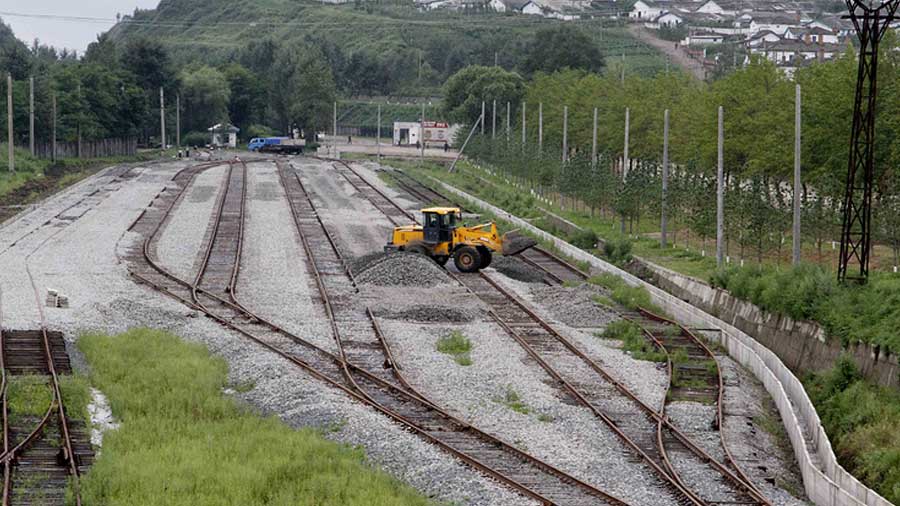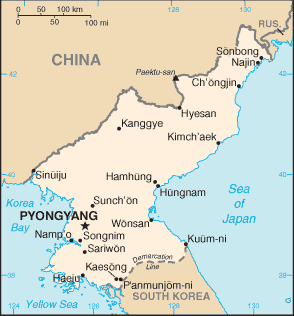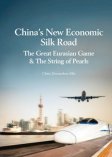North Korea Re-Connectivity Gradually Opening Up to the Belt and Road


Rail Lines Running Between North & South Korea
North Korea is not yet officially part of China’s Belt and Road Initiative; however, both China and Russia are linked to the country with regular air, rail, and shipping services. This inter-connectivity has been given another boost with the announcement that the respective leaders of North and South Korea, Kim Jong Un and Moon Jae-in, have agreed to reconnect severed rails and roads across the border, according to their joint statement signed last week.
“South and North have agreed that works to reconnect the railways and roads in the east and west should begin within a year,” the document reads.
According to earlier reports, the project’s ultimate goal is to ensure access to Russia’s Trans-Siberian Rail for prompt deliveries of South Korean cargo to Europe.
But what can North Korea offer as part of this connectivity? Of interest to China is that the DPRK will require massive infrastructure development. Hardly any major infrastructure has been put in place since the 1950’s. China and its SOE’s, and long border with North Korea, will be more than willing to assist and would in many respects be an ideal partner. Russia too, with its rail links reaching down from the North will also be able to help develop North Korean infrastructure, while the South would be keen to get involved and supply IT and services support.
In terms of commodities and in-the-ground wealth, North Korea sits on the richest part of the Korean Peninsula. It possesses considerable mineral reserves, including precious metals and rare earths, and has reasonable textiles, agricultural, and fishery industries and products. Estimates of mineral wealth vary from between US$6 trillion to US$10 trillion in reserves. China, as we have explored recently in our series on building up their gold reserves, will be very interested to get access to these. The reserves can also be used as collateral to pay for mining and extraction as well as to develop North Korean sovereign wealth. That would be a boon to South Korea, itself leery of the sheer cost of reunification. It may suit both Beijing and Seoul for North Korea to remain independent, yet open to investment on sustainable terms. In may also help Kim Jong-Un evolve himself from North Korean despot to regional savior. Its not beyond the realms of fantasy – Kim was educated in Switzerland and knows perfectly well how life is like in the West.
North Korean fisheries are at present under-utilized, while their products are sought after in Japan and South Korea. North Korean ginseng is regarded as the world’s best, and is subsequently highly valued in Far East Asia. Dezan Shira & Associates established Representative Offices for several North Korean ginseng traders in Beijing in the late 1990’s.
Opening up the North Korean agricultural and fisheries industries will attract huge investment from these nations as well as China. The north-eastern coast of North Korea also has existing developments, and in particular the Raijin-Sonborg Port and Special Economic Zone, whose foreign investment laws I was invited by the North Korean Ministry of Commerce to help research and draft back in 2002. This eventually resulted in modifications being made to the “Law of the Democratic People’s Republic of Korea on the Rason Economic and Trade Zone”, and was based on my knowledge and work undertaken by Dezan Shira & Associates in China, where the practice had made some recommendations to various provincial Chinese and international governments over tax structuring in SEZs from the perspective of widening the tax base for foreign investors.

The Raijin-Sonberg Port is useful for both China and Russia, as it offers warm water access, and has in the past been utilized extensively by South Korean manufacturers. Sanctions have placed it largely in mothballs; however, upgrading it, should relations start to improve, will offer China’s north-eastern, yet landlocked provinces of Jilin and Heilongjiang access to a nearby port close to South Korea, Japan, and facing the West coast of the United States. It is a strategically important location, and just one of several ports that could be redeveloped along the DPRK’s western and eastern seaboards.
Then there is the cheap labor. In fact, while not even realizing it, many American and European politicians are walking around today wearing suits and garments finished in North Korea, and will have indirectly contributed to their economy. This is because under internationally agreed “rules of origin”, certain procedures, such as the sewing of buttons and hems on garments and suchlike, can be carried out in a third country. I have visited factories in Pyongyang where major international brands, including well known upmarket American, European, and Japanese labels are being completed for export under the watch of Chinese entrepreneurs able to later sew in “Made in China” tags badge at their factory in Liaoning, Jilin, or other nearby provinces, then export the finished article onto the world markets. It remains an irony that Washington political hawks may be wearing shirts and suits partially crafted by North Korean hands. North Korean labor is about 20-30 percent of that payable in China’s neighboring Liaoning and Jilin Provinces.
The re-establishing of rail links between North and South Korea is an encouraging sign. Should this new rapprochement between Pyongyang and its neighbors continue, and the Donald Trump instigated nuclear deal pull through, then we are starting to see the opening up of one of the world’s most insular and regionally dangerous areas. The opportunities if this happens to re-establish North-East Asia as a development and trade hub will have significant impacts on the economies of North and South Korea, China, Japan, Russia, and the US.
About Us
Silk Road Briefing is produced by Dezan Shira & Associates. The firm provides professional services to foreign investors and Governments on matters of Eurasian and Asian trade and investment, maintaining 28 offices throughout the region, including Beijing and Moscow. The practice maintains a China Belt & Road Advisory Desk. Please email silkroad@dezshira.com or visit us at www.dezshira.com
 Related Reading:
Related Reading:
DPRK Business Monthly: July 2018
This regular publication looks at current international, domestic, and peninsular affairs concerning North Korea while also offering commentary and tourism information on the country.
D.P.R. Korea’s Rajin-Sonbong Economic & Trade Zone
This UNDP report is a special guide on the climate for foreign investment and foreign transit trade in the Democratic People’s Republic of Korea’s Tumen River Area, specifically focusing on the Rajin-Sonbong Economic and Trade Zone.
Silk Road and OBOR Business Intelligence
Dezan Shira & Associates´ Silk Road and OBOR investment brochure offers an introduction to the region and an overview of the services provided by the firm. It is Dezan Shira´s mission to guide investors through the Silk Road´s complex regulatory environment and assist with all aspects of establishing, maintaining and growing business operations in the region.
China’s New Economic Silk Road
This unique and currently only available study into the proposed Silk Road Economic Belt examines the institutional, financial and infrastructure projects that are currently underway and in the planning stage across the entire region. Covering over 60 countries, this book explores the regional reforms, potential problems, opportunities and longer term impact that the Silk Road will have upon Asia, Africa, the Middle East, Europe and the United States.









